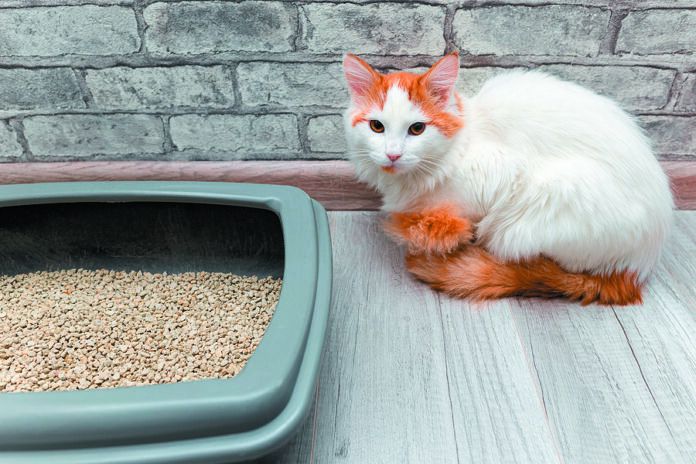Q: I’ve noticed some new cat litters on the market that say when your cat urinates, the litter changes color to indicate whether there’s a health problem before your pet shows any signs of illness. They don’t say what the health problem is, but I assume it’s something with the kidneys. Different brands have different color charts. For instance, one indicates litter that turns olive green or yellow after urine hits it is normal, while blue or red is not. What do you think of such litters? Helpful diagnostic tool? Gimmick? Somewhere in between?
Amanda Brougher
Anaheim, California
Dear Ms. Brougher,
A: Litter that’s coded for color, which can be about two times more expensive than traditional cat litter, often checks the urine’s pH. That tells whether it’s acidic or alkaline. But, says Jennifer Grady, DVM, an assistant clinical professor at the Tufts Cummings School of Veterinary Medicine, “I suspect that for most cats, the litter would lead to more anxiety and possibly unnecessary trips to the veterinarian and costly diagnostic workups. Urinary pH can vary naturally at different times of the day and is also affected by diet, so alkalinity or acidity of urine does not always indicate a problem.
“For a healthy cat,” Dr. Grady says, “the best thing a pet owner can do is to save the extra money they would have spent on fancy litter and add it to a medical savings fund for their pet for when there is a health problem down the road. They should also be sure to take their cat to see a veterinarian every six to 12 months depending on the cat’s age (twice a year for older cats) for routine examinations and any recommended screening lab work.”
For a cat who is already known to have a health problem such as urinary tract disease (perhaps because of a history of bladder stones or cystitis), the pet owner should chat with their veterinarian to see if monitoring urinary pH would be useful for that particular cat before purchasing the special litter. (Some litters also check for blood in the urine, another possible sign of urinary disease, although this is often noticed by owners in regular litter as well.) It may be useful to detect a problem early in predisposed cats or to monitor a cat’s response to a therapeutic urinary diet. The litter will not, however, replace the need for regular veterinary visits.
- Behavior: All-too-subtle signs of feline fear.
- Heart disease: What it means when a cat “throws a clot.”
- Nutrition: How long a cat food label is allowed to say the contents are “new” and “improved.”




